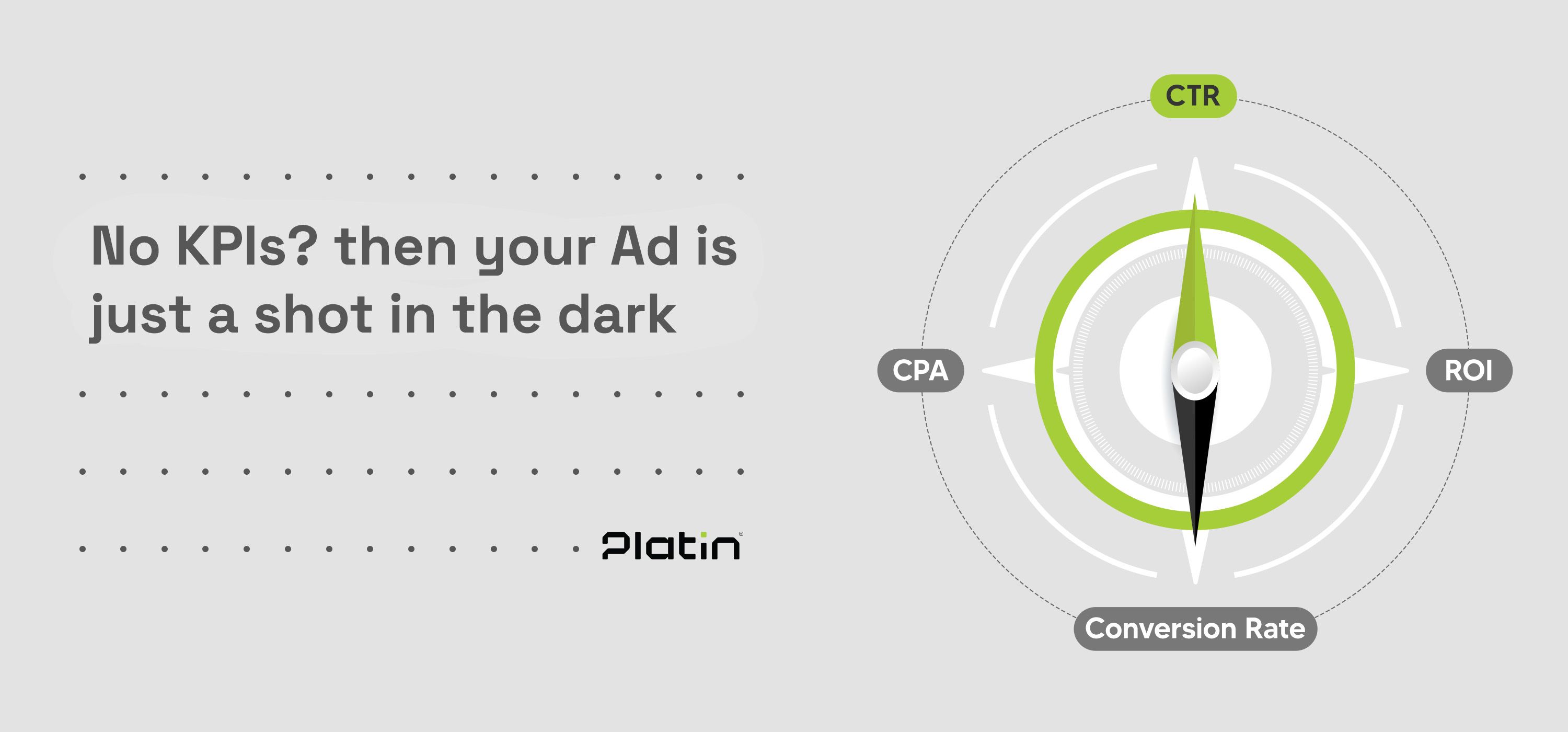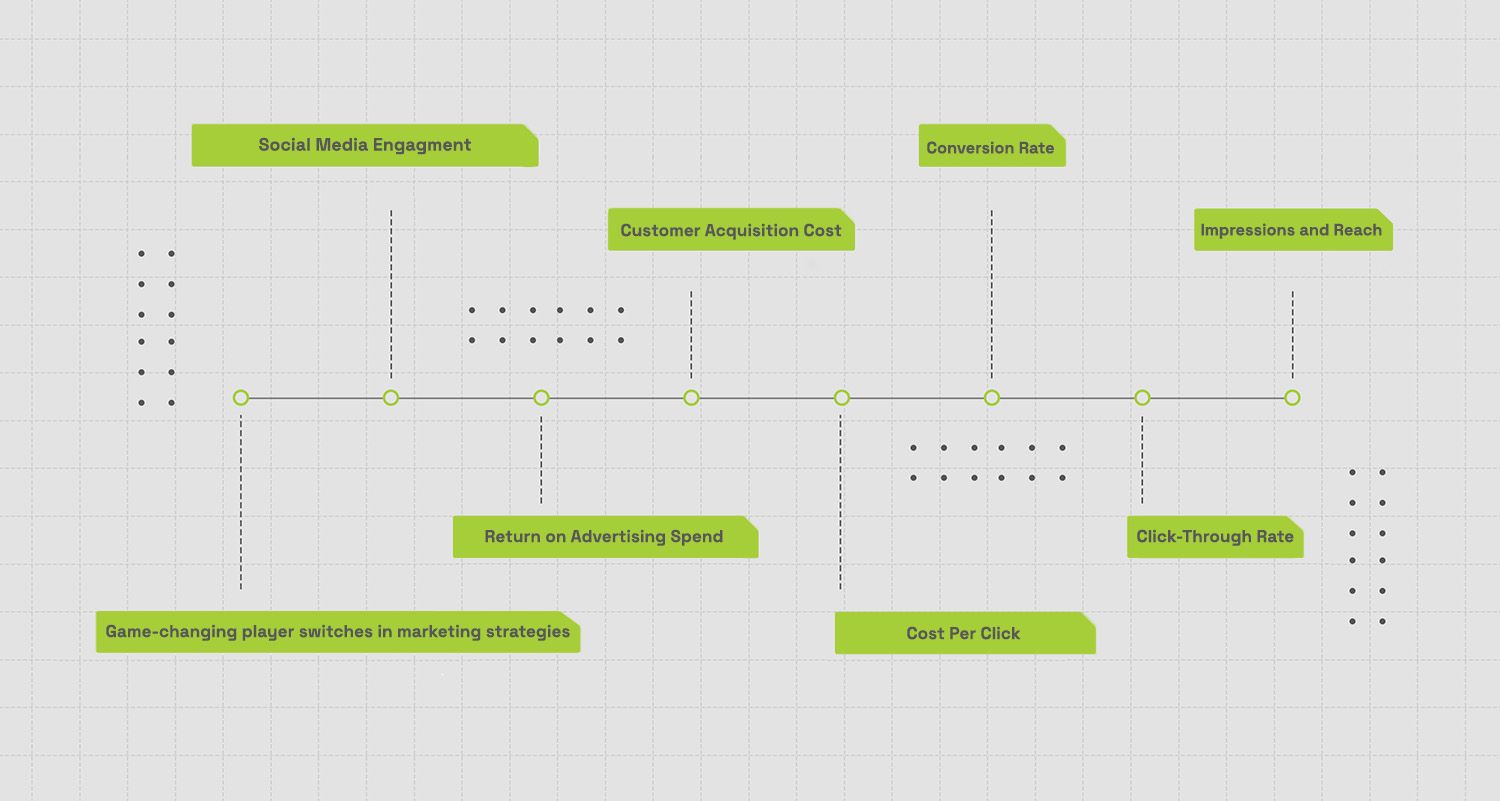KPI: The Compass That Guides Your Advertising Campaigns to Success

Imagine launching a campaign and, after two weeks, seeing no clear results. Without Key Performance Indicators (KPIs), your campaigns are like a ship adrift in the vast digital ocean—directionless and inefficient. You have no idea where the problem lies. Is the ad not appealing enough? Is the cost per click too high? Or maybe the landing page is flawed? This is exactly where KPIs come to the rescue. For one of our recent campaigns, when we defined the KPIs properly, we saw a 42% increase in click-through rate, a 30% decrease in customer acquisition cost, and a remarkable boost in ROI. These numbers didn’t happen by accident—they were the result of continuous analysis, measurement, and optimization.
Identifying and defining the right KPIs is the key to making precise and successful marketing decisions. If you don’t know what to measure, how will you know if your campaign is working? In this article, we’ll discuss the importance of evaluating these indicators and explore ways to optimize them.
What Are Key Performance Indicators in Advertising?
In advertising campaigns, Key Performance Indicators (KPIs) are measurable values used to evaluate the success and effectiveness of your marketing efforts. They provide a clear framework for assessing how well your campaigns align with your pre-defined objectives. By continuously monitoring these metrics, marketers can accurately gauge campaign performance and ensure that their ads not only reach the target audience effectively but also strengthen engagement and business growth.
How Do KPIs Shape the Fate of Your Advertising Campaigns?
Measuring KPIs in advertising campaigns is essential for understanding success and fine-tuning marketing strategies. KPIs are quantitative metrics that show how well a campaign achieves its goals—such as raising brand awareness, driving user engagement, or converting prospects into paying customers. By carefully tracking these metrics, businesses can make informed decisions, refine their strategies, and ensure optimal ROI. Here are the main reasons why KPI tracking is vital:
• Data-Driven Decisions: Continuous KPI monitoring gives marketers up-to-date insights to identify a campaign’s strengths and weaknesses. This allows for real-time adjustments to boost performance.
• Resource & Budget Optimization: Analyzing KPIs provides the insights needed to allocate resources to the most effective parts of a campaign. By focusing on winning strategies and optimizing or eliminating underperforming areas, businesses can maximize their marketing budget.
• Alignment with Business Goals: Measuring KPIs ensures that advertising aligns with broader brand strategies. For example, if the main goal is to increase brand awareness, metrics like impressions become crucial.
Do You Know How to Measure Your Campaign’s Success?
Tracking advertising KPIs is essential for performance analysis, informed decision-making, and aligning marketing activities with overall business goals. Ongoing analysis of these metrics helps organizations refine their advertising strategies and secure long-term success. Here are some of the most effective advertising KPIs to track:
Impressions & Reach
In advertising, impressions and reach are two vital KPIs that offer clear insights into how many people see your campaigns and how impactful they might be.
• Reach: This measures the total number of unique people who see your content over a specific period. For example, if a social media post is seen by 1,000 people, its reach is 1,000.
• Impressions: This shows how many times your content is displayed, regardless of whether users interact with it. It includes multiple views by the same user. For instance, if your ad appears 3,500 times in user feeds, you have 3,500 impressions. Impressions help you understand how often your message is seen and its role in brand recall.
To clarify the difference, imagine a Facebook post is shown to 1,000 people but generates 3,500 impressions. That means, on average, each person saw the content 3.5 times. This impressions-to-reach ratio reflects content performance and audience behavior. Understanding these metrics is essential for aligning marketing goals with the right strategies. Here’s how they help:
• Brand Awareness: A high reach ensures your message reaches a wide audience, boosting brand awareness. Maximizing reach is critical when launching new products or entering new markets.
• Engagement & Conversion: Impressions strengthen your message. Repeated exposure (high impressions) increases familiarity, which boosts the chances of engagement and conversions. According to marketing principles, people usually need to see a message multiple times before taking action.
Click-Through Rate (CTR)
Click-Through Rate (CTR) shows the percentage of users who click on your ad after seeing it. It directly measures how appealing and persuasive your ad is in grabbing the audience’s attention and driving interaction. A higher CTR means your ad resonates well with your audience, resulting in more website visits and a higher chance of turning visitors into customers.
Monitoring CTR is crucial because it provides instant feedback on ad performance and allows you to optimize campaigns based on real data. A strong CTR not only boosts engagement but also lowers advertising costs and improves ROI.
Conversion Rate (CVR)
Conversion Rate (CVR) shows the percentage of users who complete a desired action after seeing your ad or visiting your site. This action could be making a purchase, signing up for a newsletter, filling out a contact form, or any other targeted interaction. To calculate CVR, divide the total number of conversions by the total number of visitors or interactions, then multiply by 100. For example, if a website has 1,000 visits and 50 people make a purchase, the conversion rate is 5%. A higher CVR indicates your advertising is effective in attracting and convincing users to act.
Cost Per Click (CPC)
Cost Per Click (CPC) shows the average cost an advertiser pays for each click on their ad. It’s calculated by dividing the total campaign cost by the number of clicks received. For example, if an advertiser spends $500 and gets 250 clicks, the CPC is $2. A lower CPC means a more efficient, cost-effective campaign, enabling advertisers to reach a broader audience within a set budget. Monitoring CPC helps assess the financial efficiency of online ads and directly impacts ROI.
Customer Acquisition Cost (CAC)
Customer Acquisition Cost (CAC) shows the total cost a business incurs to acquire a new customer. It’s calculated by dividing the total marketing and sales costs by the number of new customers gained in a specific period. For example, if a company spends $10,000 on marketing in a month and acquires 500 new customers, the CAC is $20 per customer. Tracking CAC is vital because it ensures that the cost of acquiring a customer doesn’t exceed the revenue they generate over their lifetime. A lower CAC indicates more efficient marketing and healthier business growth.
Return on Advertising Spend (ROAS)
Return on Advertising Spend (ROAS) measures the effectiveness of advertising by showing how much revenue is earned for every dollar spent. For example, if a company spends $1,000 on a campaign and earns $5,000 in revenue, its ROAS is 5—meaning every $1 spent generated $5 in revenue. This metric helps businesses gauge how efficiently their ad budget is being used and make better budget allocation decisions. A higher ROAS means better advertising performance. Generally, a 4:1 ratio ($4 revenue for every $1 spent) is considered acceptable, but this can vary based on margins, operating costs, and business goals.
Social Media Engagement
Social media engagement is a crucial KPI that measures how much your audience interacts with your brand on social platforms. This includes metrics like likes, shares, comments, and mentions, showing how appealing your content is and how much it drives user participation. High engagement means stronger customer interest and loyalty, which can lead to increased brand awareness and positive word-of-mouth.
Monitoring social media engagement helps advertisers assess campaign success and refine strategies to connect more effectively with their audience. Prioritizing engagement enables brands to build meaningful connections and accelerate business growth.

From Celebrities to Influencers: A Game-Changer in Marketing Strategies
A great example of a successful influencer marketing campaign is CoverGirl’s brand refresh. Once relying heavily on celebrity endorsements, CoverGirl recognized the rising impact of social media influencers and pivoted its strategy accordingly.
The brand collaborated with influencers on platforms like TikTok and Instagram. These influencers created authentic content about CoverGirl’s products, building a deeper connection with a younger audience. Key improved KPIs in this campaign included:
• Engagement rate: likes, comments, shares, and saves.
• Conversion rate: website visits, purchases, and sign-ups driven by influencer content.
• Brand awareness: tracked through audience comments, online discussions, and shifts in public perception.
• ROI and financial success: measured by comparing revenue generated with the cost of influencer partnerships.
Focusing on influencers helped CoverGirl revitalize its brand, boost sales, and strengthen its position in the competitive beauty market. This shows how smart collaboration with influencers and clear KPIs can help reinvent a brand and achieve remarkable success in digital marketing.
How to Run Smarter Advertising Campaigns
Optimizing KPIs is crucial for boosting the effectiveness and impact of your marketing campaigns. Here are some of the most effective ways to improve KPIs:
• Understand your audience: Increase engagement and conversion rates by analyzing demographic data, preferences, and behavior, and choosing the right advertising channels.
• Set SMART goals: Define Specific, Measurable, Achievable, Relevant, and Time-bound goals with KPIs aligned to each objective.
• Balance brand and performance advertising: Combining brand-building and performance ads can boost ROI by 25% to 100%.
• Continuously evaluate and adjust: Regularly review metrics like website traffic, conversion rates, and user engagement to refine strategies and keep them aligned with business goals.
• Invest in trust and brand awareness: Maintaining customer trust through clear and consistent communication can deliver higher ROI over time.
By implementing these strategies, marketers can enhance the effectiveness of their campaigns, optimize their KPIs, and maximize marketing ROI.
From Wasted Budget to High Returns: Why Analysing KPIs Matters
Running a successful advertising campaign without defined KPIs is like navigating in the dark. Without precise data, you’ll never know if your ads are working or if your budget is being wasted. KPIs act as a compass—from CTR to conversion rates and CAC, they help you identify strengths and weaknesses and optimize accordingly. If you want your advertising to deliver the highest return, never neglect continuous data analysis and strategy refinement.